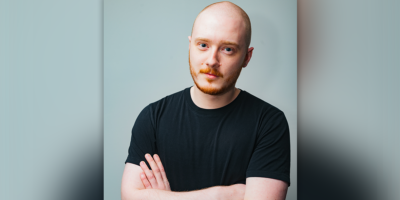Trauma-informed HIV testing: creating safe environments for LGBTQ2S+ people

LGBTQ2S+ people across Canada can face many barriers to healthcare, including possible trauma related to sexual and gender identities. Structural factors like homophobia and transphobia mean that these communities face many social issues such as higher rates of unemployment, lower incomes, and lower access to housing. For BIPOC (Black, Indigenous, and People of Colour) LGBTQ2S+ people, racism can compound these issues. Such challenges make it harder to access services like primary healthcare or mental healthcare. As a result, HIV testing appointments might be the only chance for help with mental health, drug use, housing or intimate partner violence. Someone in need of these services might also have faced trauma, and this may affect how they experience healthcare environments.
A holistic approach to HIV testing explores how past events might affect someone’s health and wellbeing, and offers safety and support as they navigate through them. This approach, used across physical and mental health services, is known as trauma-informed care. Bruce Dow, a registered psychotherapist (qualifying) in Toronto’s gay village, explains that trauma occurs when someone experiences a distressing event, but do not have support from family or friends to process it immediately afterwards. They might lack the emotional tools, supportive network or physical safety to do so. “If this process is interrupted,” he says, “you will need to engage with your distress over and over.” These distressing events can cause ongoing psychological harm until they have been worked through in a safe environment. Trauma can be re-activated, or triggered, if someone is placed in a situation that mirrors their original event; this can create new traumas, or compound old ones. “Trauma is energy,” Dow explains. “Energy cannot be destroyed – it needs to be released.”
For LGBTQ2S+ people, trauma can be diffuse. This is because stigma and discrimination –which is amplified for racialized people or people who use drugs – expands trauma beyond a single event. This can raise the risk of re-activating trauma in a healthcare setting. Trauma-informed care involves acknowledging and accommodating these realities when providing care, and taking steps to avoid re-traumatizing someone. For Grant Picarillo, a nurse practitioner in Montreal, this means reflecting on a client’s journey to where they are now. “Trauma-informed care means not asking ourselves what is “wrong” with the patient,” he says, “but what happened that led them here.” For Dow, it means offering the kind of support that was missing in the past. He achieves this by asking questions and meeting patients where they are at. “They still need the support they never got,” he explains. “What is that support?”
In Canada, many LGBTQ2S+ people face a higher burden of HIV due to the structural factors that create health inequities for this community. Mental health services covered by public insurance may be limited and people who have experienced trauma may not be able to access the care they need. Mental healthcare services not covered by public health insurance can often be unaffordable. HIV service providers who deliver care to the LGBTQS+ community, then, may be their only interface with mental health services. Although these encounters could heighten existing trauma, they also present an opportunity to offer the support and referrals that clients need. This care can be outlined with four “R”s: Realizing trauma’s impact, Recognizing its symptoms, Responding to them and Resisting re-traumatization.
When clients with trauma present for HIV testing, trauma can be re-activated if their environment is noisy or chaotic. A calm and quiet space with clear signage may help them feel at ease. Trauma can also be re-activated if clients are not given sensitive and affirming care. For example, intake questions may trigger trauma around discrimination if clients perceive judgement or shame. HIV service providers can mitigate this by using neutral language for topics like drug use, sex partners and sexually transmitted infections (for example, using “person who uses drugs” instead of “addict”). They can also recognize that “risk factors” may be ways of managing existing trauma; avoiding “good” or “bad” language around these can support patients to feel more comfortable discussing their health. Instead of telling clients what they should do, HIV service providers can ask what clients want for themselves (e.g. asking if they would like harm reduction supplies, instead of immediately providing them). This can create space for clients to ask their own questions and guide their interaction.
Managing trauma during and after HIV testing requires ongoing communication and reassurance. For example, HIV service providers can ask for consent before physically touching clients or collecting a sample (e.g. drawing blood or oral swabs for STI testing). These physical interactions may be a trigger for someone with experience of assault, but explaining the testing process before each step can help clients feel safe and supported. For Picarillo, trauma-informed HIV testing “means creating a space – not just a clinical one, but an emotional one – that is validating.” If a client receives a positive result, this means validating their emotions while also providing reassurance. A diagnosis itself can produce or reinforce trauma, but balancing emotional support with clear and positive health information can help minimize this.
We know that HIV treatment is simple, effective and keeps someone healthy. However, the impact of an HIV diagnosis is a real and valid experience for clients. When treating patients who have recently been diagnosed, Dow works to acknowledge stigma while normalizing life with HIV. “If we can help to normalize the diagnosis,” he says, “there can be hope.” He offers clients “an invitation for cognitive dissonance: HIV carries stigma, but I need not live in that stigma. I am of my culture, but its bias need not be mine.”
Dan Udy is a writer and editor based in Toronto. He has worked in the HIV sector since 2018 and holds a PhD in Medical Humanities from King’s College London.
